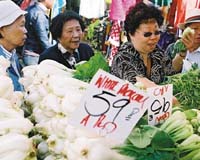 |
Puerto Maldonado, Peru (AFP) Nov 20, 2010 The long-awaited Inter-Oceanic Highway spanning South America is due to be completed next month, after several fitful years of construction and despite early opposition from environmental groups. The controversial thoroughfare, linking up road networks from the continent's Atlantic and Pacific Ocean coasts, will cross through the Peruvian town of Puerto Maldonado, deep in the Peruvian Amazon. The 900-million-dollar highway, which involves renovating some 2,600 kilometers (1,600 miles) of road from Peru's southwest coast to its border with the Brazilian state of Acre, was conceived decades ago. It has progressed in fits and starts because of funding problems. But now, at long last, it is poised to be unveiled next month, although it remains as controversial today as when it was first proposed. Opposition was particularly strong among environmentalists, who worry that illegal logging, mining and other industries will be made easier once the highway is built, threatening fragile rainforests. Almost 95 percent complete, the highway will link to existing roadways that serve Brazil's southeastern port of Santos and Peru's ports of San Juan de Marcona, Matarani and Ilo, on the other side of the Andes. The "Continental Bridge" spanning the Madre de Dios river in Puerto Maldonado is the last piece of unfinished business, but it is scheduled to be completed in December, weather permitting. Over a half dozen years, some 1,000 kilometers (600 miles) of road has been laid down and another 1,600 kilometers (1,000 miles) improved in Peru. In a parallel project further south, Brazil is building a road from Santos on the Atlantic coast to Chile's Pacific port of Iquique -- a 5,800 kilometer (3,600 mile) highway that will cross through Bolivia. When the Inter-Oceanic highway is up and running, it will give travelers the ability to traverse a huge swath of the continent, from the Amazon to the Andes, and on from there to the Pacific. The road covers much of the same ground used by settlers who first conquered the wild Peruvian interior generations ago and promises to usher in an era of development and prosperity for the region. The highway will provide "an injection of wealth in the south" said Peru's President Alan Garcia ahead of the unveiling. He has also announced a Peru-to-Brazil road race to take place in January. Augusto de Castro, director of a Brazilian association for foreign commerce, said the roadway "makes possible the connection of a very isolated Amazon region of Peru to the rest of the world." He said it also will allow northern Brazil to export products to markets in China, Korea and Japan -- particularly sought-after agricultural goods. Angel Trigoso, an official for a business association for the Madre de Dios region, said there has already been an increase in tourism in the region, as well as a noticeable increase in demand for labor. But environmentalists fear large companies will now overrun the region, polluting Amazon jungle rivers and hastening the potentially devastating process of rainforest deforestation. In Brazil, where road infrastructure is significantly more developed, "70 percent of Amazon deforestation is concentrated 50 miles on either side of the major paved roads," said Paulo Moutinho, a researcher with the Brazilian Institute for Amazon Climate Research. If Peru doesn't actively work to avoid the same outcome, "it is destined to repeat it," he said. The situation for Peru is even more complicated because of a legal and illegal gold mining industry in the country's southeast. The country is the world's fifth gold producer, and there are already some 30,000 independent miners -- a number certain to grow once the road opens. Native communities are worried about a likely increase in illegal prospectors seeking to make their fortune. And indigenous rights activists say there is already evidence that the road is affecting traditional communities. "The highway already is causing severe impacts," said Vidal Salazar, head of a local group that represents about 30 indigenous communities and rural settlements locally. "They say there are fires that have been set all along the length of the road -- a traditional Andean method of clearing land -- as settlers relocate to the area," he said, voicing fears longstanding populations will be displaced. Even before the road officially opens "hundreds of people are arriving, putting pressure on the lands that had been occupied for years by indigenous people," Salazar said.
Share This Article With Planet Earth
Related Links Global Trade News
 Chinese consumers blame US as prices spiral up
Chinese consumers blame US as prices spiral upBeijing (AFP) Nov 18, 2010 At a bustling outdoor fruit and vegetable market in Beijing, Zhan Tiehui grumbles about rising prices for garlic, ginger and cabbage and points a stubby finger in the direction of the United States. "The source of China's inflation is America, they are printing too much money," Zhan, 50, told AFP as she clutched plastic bags full of vegetables. "Everything is definitely more expensive th ... read more |
|
| The content herein, unless otherwise known to be public domain, are Copyright 1995-2010 - SpaceDaily. AFP and UPI Wire Stories are copyright Agence France-Presse and United Press International. ESA Portal Reports are copyright European Space Agency. All NASA sourced material is public domain. Additional copyrights may apply in whole or part to other bona fide parties. Advertising does not imply endorsement,agreement or approval of any opinions, statements or information provided by SpaceDaily on any Web page published or hosted by SpaceDaily. Privacy Statement |